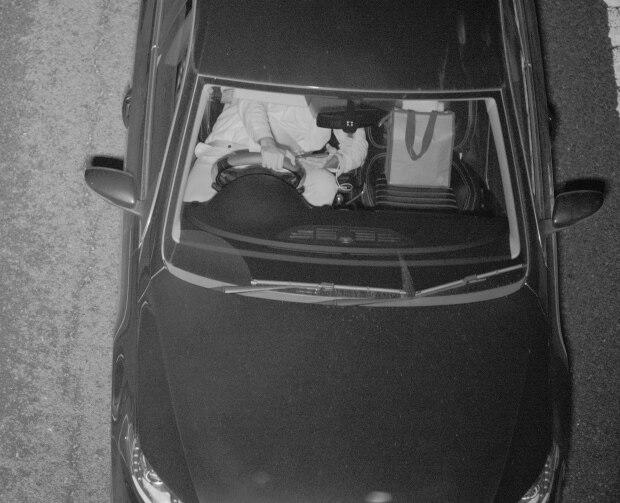Future of distracted driving technology makes Edmonton pitch
An Australian-based technology firm that uses artificial intelligence to catch distracted drivers made a pitch to an Edmonton conference on Friday.
Acusensus presented its automatic camera enforcement technology at the International Conference on Urban Traffic Safety. Founded in early 2018, the company made international headlines with a pilot program in Australia earlier this year. It's now eyeing North American markets.
The Acusensus camera system is mounted on the side or above the road, like photo radar.
But unlike photo radar, the system takes high-resolution pictures of every passing car. A machine-learning artificial intelligence then combs through each picture for signs of a distracted driver on a cellphone.
Founder and managing director Alexander Jannink says the goal is to reduce crashes and fatalities on the road by deterring distracted driving.
"We really encourage the community to be behind these kinds of initiatives so that then you can have more confidence that you can get home safely," he said.
Distracted driving contributed to 21 per cent of fatal collisions across Canada in 2016, according to estimates from Transport Canada.
Most distracted driving offences involve a cellphone or other electronic device, according to data gathered by the Alberta government. The province has recorded over 20,000 offences each year since 2014. Edmonton accounted for a fair chunk of that total last year: Edmonton police say they issued 7,739 distracted driving tickets in 2018.
Technology poses privacy, surveillance issues
But experts are warning the technology poses privacy concerns and would likely face court challenges in Canada.
"I think for sure there's going to be a public outcry in whatever jurisdictions in Canada that introduce the technology," said Tom Sides, an Edmonton-based lawyer specializing in technology and privacy issues.

The question, Sides says, is whether this indiscriminate and widespread surveillance technology amounts to a violation of the Canadian Charter of Rights and Freedoms. The lawyer says a judge would have to balance the right to be secure against unreasonable search with other considerations, such as public safety and a limited expectation of privacy on public roads.
"One would have to consider how that existing law would be interpreted in light of this newer, and I would say more invasive, surveillance technology," Sides said.
But Jannink says the company has built extensive privacy safeguards into the technology.
"We take privacy exceptionally seriously and the public should have the confidence that the majority of those photos are not kept and they are not stored anywhere and they're instantly deleted," Jannink said.

The onboard artificial intelligence (AI) deletes around 95 per cent of the photos on-site before any human can see them, he says. If the AI does not detect a distracted driver, the photos are deleted within seconds.
If the AI concludes a driver is using their phone, it encrypts the photos and sends them to the authorities for review. Acusensus says only the authorities would hold the unique virtual key to unlock the photos and data.
A human would then review an anonymous photo of the driver to confirm evidence of distracted driving before unlocking identifying evidence from the scene, such as wide-angle photos of the license plate and the time of the incident.
"The public have to really have confidence in the integrity of the solution to support the program," Jannink said.
Technology is 'cutting edge', city says
The City of Edmonton is aiming to eliminate traffic-related deaths by the year 2023 as part of its Vision Zero program.
Bob Hassel, senior speed management coordinator with Edmonton's office of traffic safety, says the city is always looking for new technology to help move towards its Vision Zero goal.
"We have detection methods that we've seen here at this conference for things like distracted driving that I think are really leading and cutting edge that at some point would be really worthwhile in looking into," he said.
"Especially with our goal of achieving Vision Zero and anything that would help us attain that would be absolutely extraordinary."
Jannink said Acusensus has begun preliminary conversations with stakeholders about bringing the technology to Canada. In May, the company announced that it had hired a head of sales for North America to work closely with authorities and partners to roll out the technology.
The Acusensus system was piloted for the first time in New South Wales, Australia, at the beginning of 2019.

Over 90 days, the system analyzed millions of photos and sent over 500,000 sightings of distracted driving for human review, Jannink said. Of those cases, around 105,000 were confirmed cases of distracted driving, he said.
Jannink says as the system reviews more photos it gets better at identifying cases of distracted driving.
The system could potentially learn to identify other cases of distracted driving, such as eating or reading, but Jannink told the conference the company is focused on cellphones. The technology could also measure speeds and identify unregistered vehicles.


